-
Putting consistent value on experts' uncertainty on climate change models
Science can flourish when experts disagree, but in the governmental realm uncertainty can lead to inadequate policy and preparedness. When it comes to climate change, it can be OK for computational models to differ on what future sea levels will be. The same flexibility does not exist for determining the height of a seawall needed to protect people from devastating floods. For the first time in the climate field, researchers have combined two techniques long used in fields where uncertainty is coupled with a crucial need for accurate risk-assessment — such as nuclear energy — in order to bridge the gap between projections of Earth’s future climate and the need to prepare for it.
-
-
Cellphone-sized device detects the Ebola virus quickly

The worst of the recent Ebola epidemic is over, but the threat of future outbreaks lingers. Monitoring the virus requires laboratories with trained personnel, which limits how rapidly tests can be done. Now scientists report in ACS’ journal Analytical Chemistry a handheld instrument that detects Ebola quickly and could be used in remote locations.
-
-
Rising seas put Vietnam in the “bull’s eye” of rising seas
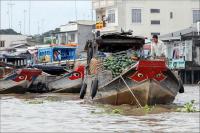
A rising sea level — for a country like Vietnam, with 2,000 miles of coastline — presents a major environmental and food security challenge, especially in the Mekong River Delta region where 22 percent of the population lives and about half of the country’s food is produced.
-
-
“G-Science” academies call for strengthening global disaster resilience

In the decade between 2005 and 2014, more than 6,000 natural and technological disasters occurred around the world, killing more than 0.8 million people, displacing millions more, and costing more than $1 trillion. Losses due to disasters are increasing in both developed and developing countries. Human factors that increase exposure and vulnerability, such as poverty, rapid population growth, disorderly urbanization, corruption, conflict and changes in land use, poor infrastructure including non-engineered housing, together with effects of climate change on weather patterns with increased extreme events, aggravate the negative consequences of natural and technological hazards.
-
-
A single oil field a key culprit in global ethane gas increase
A single U.S. shale oil field is responsible for much of the past decade’s increase in global atmospheric levels of ethane, a gas that can damage air quality and impact climate, according to a new study. The researchers found that the Bakken Formation, an oil and gas field in North Dakota and Montana, is emitting roughly 2 percent of the globe’s ethane. This is about 250,000 tons per year.
-
-
New Web portal for coastal resilience
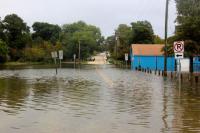
William & Mary Law School and William & Mary’s Virginia Institute of Marine Science (VIMS) are collaborating on a new Web site which will provide key information to support local, regional, and state efforts to adapt to sea-level rise. Tidal and storm surge flooding risks, FEMA flood zone maps, storm history, and critical infrastructure risk assessments are all topics that are likely to be included on the Web site. Information about conditions of shorelines, wetlands, beaches, and coastal forests will also be in the portal.
-
-
Changing climate in Michigan poses an emerging public health threat
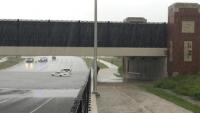
Changing climate conditions — including warmer temperatures and an increased frequency of heavy rainstorms — represent “an emerging threat to public health in Michigan,” according to a new report from University of Michigan researchers and state health officials.
-
-
1.5°C vs 2°C global warming: Half a degree makes a big difference

European researchers have found substantially different climate change impacts for a global warming of 1.5°C and 2°C by 2100, the two temperature limits included in the Paris climate agreement. The additional 0.5°C would mean a 10-cm-higher global sea-level rise by 2100, longer heat waves, and would result in virtually all tropical coral reefs being at risk.
-
-
DHS, NASA collaborate in search of innovation in homeland security

Crowdsourcing and incentive prizes across industry have led to the successful creation of advanced technologies, such as autonomous vehicles and improved data analytics. The DHS Science and Technology Directorate (S&T) is expanding its efforts to solicit innovations like these through its partnership with NASA.
-
-
Global warming could help crops’ productivity
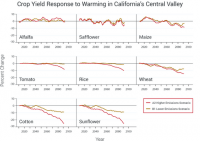
Many scientists fear that global warming will hit staple food crops hard, with heat stress, extreme weather events, and water shortages. On the other hand, higher levels of carbon dioxide — the main cause of ongoing warming — is known to boost many plants’ productivity, and reduce their use of water. So, if we keep pouring more CO2 into the air, will crops fail, or benefit? A new study tries to disentangle this complex question. It suggests that while greater warmth will reduce yields of some crops, higher CO2 could help mitigate the effects in some regions, unless other complications of global warming interfere.
-
-
Globe continues to break heat records -- for 11th straight month
At the risk of sounding like a broken record, March set another heat record for the globe. As Earth continues to warm, and is influenced by phenomena such as El Niño, global temperature records are piling up. For 2016 year to date (January-March), the average temperature for the globe was 2.07 degrees F above the twentieth-century average. This was the highest temperature for this period in the 1880–2016 record.
-
-
Robot offers safer, more efficient way to inspect power lines
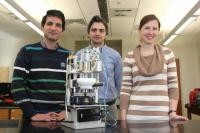
Currently, line crews have to suit up in protective clothing, employ elaborate safety procedures, and sometimes completely shut off the power before inspecting a power line. It can be difficult, time-consuming, and often dangerous work. Researchers have invented a robot which could change the way power lines are inspected — providing a safer and more cost-effective alternative.
-
-
Coded apertures improves, shrinks mass spectrometers for field use

A modern twist on an old technology could soon help detect rogue methane leaks, hidden explosives, and much more. Mass spectrometers were invented in the 1930s, and they are still typically the size of an oven or refrigerator. Inherent hurdles to miniaturization have made it difficult to use them outside of a laboratory. Researchers are using software to dramatically improve the performance of chemical-sniffing mass spectrometers. With the help of modern data analytics, researchers have demonstrated a technology using a so-called “coded aperture” that promises to shrink these devices while maintaining their performance.
-
-
Fossil fuels could be phased out worldwide in a decade: Study
The worldwide reliance on burning fossil fuels to create energy could be phased out in a decade, according to energy experts. The experts analyzed energy transitions throughout history, and argue that only looking toward the past can often paint an overly bleak and unnecessary picture. The transition from wood to coal in Europe, for example, took between 96 and 160 years, whereas electricity took 47 to 69 years to enter into mainstream use. The future could be different: the scarcity of resources, the threat of climate change, and vastly improved technological learning and innovation could greatly accelerate a global shift to a cleaner energy future.
-
-
New way to clean contaminated groundwater

A team of researchers has helped discover a new chemical method to immobilize uranium in contaminated groundwater, which could lead to more precise and successful water remediation efforts at former nuclear sites. Uranium is present in contaminated groundwater at various sites in the United States as a legacy of Cold War-era processing and waste disposal activities associated with nuclear materials production.
-
More headlines
The long view
New Technology is Keeping the Skies Safe
DHS S&T Baggage, Cargo, and People Screening (BCP) Program develops state-of-the-art screening solutions to help secure airspace, communities, and borders
Factories First: Winning the Drone War Before It Starts
Wars are won by factories before they are won on the battlefield,Martin C. Feldmann writes, noting that the United States lacks the manufacturing depth for the coming drone age. Rectifying this situation “will take far more than procurement tweaks,” Feldmann writes. “It demands a national-level, wartime-scale industrial mobilization.”
How Artificial General Intelligence Could Affect the Rise and Fall of Nations
Visions for potential AGI futures: A new report from RAND aims to stimulate thinking among policymakers about possible impacts of the development of artificial general intelligence (AGI) on geopolitics and the world order.
Smaller Nuclear Reactors Spark Renewed Interest in a Once-Shunned Energy Source
In the past two years, half the states have taken action to promote nuclear power, from creating nuclear task forces to integrating nuclear into long-term energy plans.
Keeping the Lights on with Nuclear Waste: Radiochemistry Transforms Nuclear Waste into Strategic Materials
How UNLV radiochemistry is pioneering the future of energy in the Southwest by salvaging strategic materials from nuclear dumps –and making it safe.
Model Predicts Long-Term Effects of Nuclear Waste on Underground Disposal Systems
The simulations matched results from an underground lab experiment in Switzerland, suggesting modeling could be used to validate the safety of nuclear disposal sites.
